-
Car Reviews
- All reviews
- Midsize SUVs
- Small cars
- Utes
- Small SUVs
- Large SUVs
- Large cars
- Sports SUVs
- Sports cars
- Vans
Latest reviews
- Car News
-
Car Comparisons
Latest comparisons
- Chasing Deals
Chasing Cars editor Tom Baker lives with the all-electric Polestar 2 for six months and finds much to like – and numerous areas for improvement for the Swedish brand
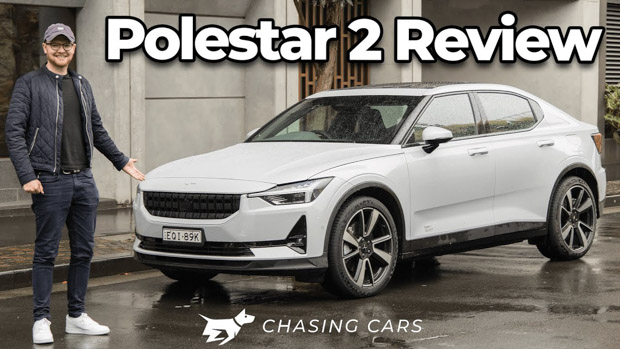
We comprehensively review many electric cars at Chasing Cars and we also run an extensive long-term testing program – but did you know we’d never run an electric car long termer before 2022? Well, that all changed with the delivery of a snow-white Polestar 2 to our long-term test fleet at the beginning of the year.
This test represented an opportunity and a challenge for car custodian Tom Baker, the publication’s editor. Living in an apartment with no current prospect of home charging, and without easy charging at the office, is it possible to live with an electric car with the state of public chargers in Australia?
Infrastructure and vehicle alike were put to the test over a gruelling, multi-disciplinary six-month test for the Polestar 2.
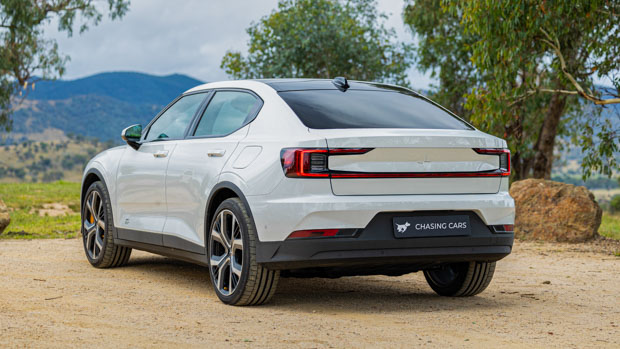
In total, our car cost $90,300 when delivered, or around $98,000 driveaway.
Now, in October 2022, the long range dual motor variant costs $73,400 before on-road costs. The closest build approximating our long-term test car would be $92,300, or around $101,000 driveway.
After six months and 6000km in our Polestar 2 long range dual motor with all three packs, it was time to bid goodbye to this Swedish-Chinese electric dynamo.
As is emerging as a trend in EV motoring, our Polestar 2 was better when we returned the car in August than when we had taken delivery in January. That was thanks to over-the-air updates: most free, improving the infotainment system and safety system tuning, and one paid, increasing the car’s already-generous power by a further 10 percent to 330kW – for $1600.
We also improved the car ourselves, primarily by getting our hands dirty and tinkering with the Öhlins dampers – no easy task due to poor wheel-arch clearance, and best done on a hoist – to find the most comfortable suspension setting. Turns out, that’s max-soft.
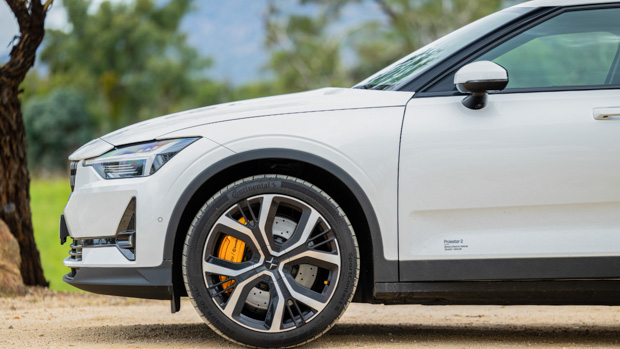
Therein lies our biggest bugbear with the Polestar 2 – which generally impressed us. The ride on 20-inch wheels and Öhlins dampers is far too firm for Australia’s broken-up pavement: stiff is an understatement. The ride is way too hard. That’s one reason we’d avoid the performance pack until there’s a suspension rethink. Maybe the Polestar 2 will gain adaptive dampers, like its new Polestar 3 SUV sibling. The ride is so firm that people in the back seat sometimes bump their head on the roof.
But you actually don’t need the other bits in the pack either. The Brembo brakes are excellent, with strength and impressive feel, but the car’s well-tuned one-pedal drive mode means we barely touched the physical brakes. And the performance pack’s ‘Swedish gold’ detailing might be too gaudy for some.
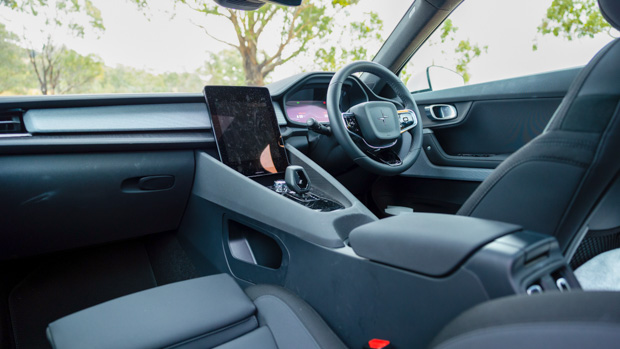
Instead, we’d reluctantly invest the money saved by skipping the performance pack on the optional perforated nappa leather with seat cooling functions. That is the antidote to our second and final major problem with the Polestar 2: the unsuitable Weavetech upholstery. Weavetech would work well in Scandinavia, because the neoprene-like material so hot without wasting energy running the seat heater – but in warm Australian summers it is a punishment, inducing lots of sweat.
We can’t recommend buying a Polestar 2 with Weavetech. It’s a vexed choice. The base trim’s cloth seats are totally fine. But if you want Harman-Kardon audio and fully-electric seats, you have to option the plus package. The plus package swaps the base cloth for Weavetech. The only way out is to option cooled nappa leather ($6000). Perhaps Polestar Australia could eliminate Weavetech for our market, allowing the base cloth seats to be part of the plus pack.
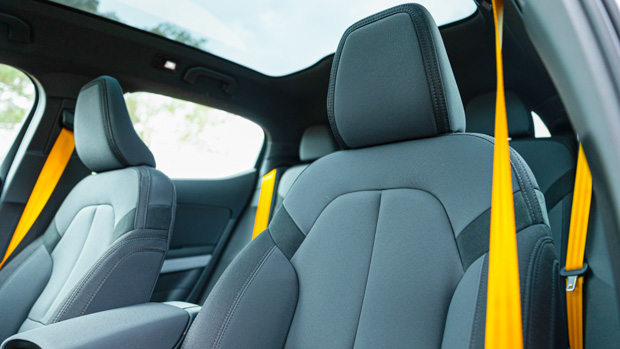
Polestar have done a superb job adapting Volvo’s CMA platform for their own use here. Despite CMA being designed to slot into combustion cars like the Volvo XC40, the Polestar 2 has a well-finished front boot (frunk), and in general, it drives like a dedicated electric car.
The centre of gravity is extremely low thanks to the heavy 78kWh battery – but the Polestar 2 shrugs off its 2113kg kerb weight impressively, despite being far heavier than an equivalent combustion sedan, such as the BMW 330i (1470kg).
The steering is not like that in a Volvo – instead, it’s almost video-game quick, making the Polestar 2 feel darty and fun to drive around town. But it was on the flowing high-speed country roads of our 2022 Car of the Year award scheme where we really bonded with the Polestar 2. The judges joked that this car is the most fun-to-drive Volvo ever made. Yes, we know it’s not a Volvo, but in just their second model, Polestar has managed to make this car extremely rewarding to punt down a rural route.
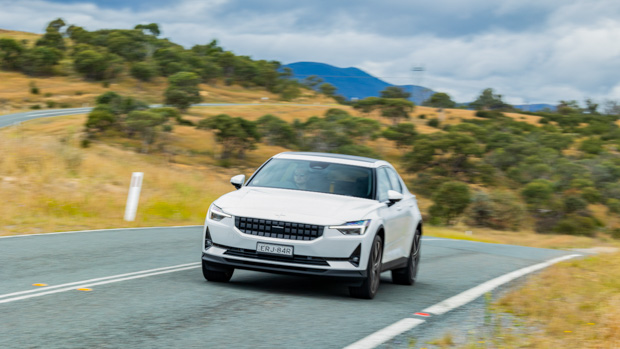
There is an incredible amount of polish in the Polestar 2’s chassis, which allows keen drivers to find higher and higher plateaus of ability. You can tap into superb body control and extremely high levels of mechanical and chemical grip – just make sure the steering wheel is pointing in the right direction. In a way that reminded us of the final Mitsubishi Evo, the Polestar 2 feels like it has a locked centre differential. It grips and goes, and with its slightly eerie lack of self-centring, you better point the car right.
It’s just a shame the ride quality is so poor at low speeds – at least with the performance pack, on such big wheels and such aggressive dampers.
Where the Polestar 2 feels least like its major rival – the Tesla Model Y – is in the cabin. Picking up on learnings from Volvo without self-consciousness, the Polestar feels effortlessly high-quality. Fit and finish was exceptional on our test car, without a single rattle, creak or untoward noise developing despite the punishment we served up.
While some of the finishes left durability to be desired – the natural fibre lining the car’s wide central spine and lower dashboard is just too prone to marks from legs scraping by – we were really impressed by the materials, especially our car’s attractive open-pore black wood.
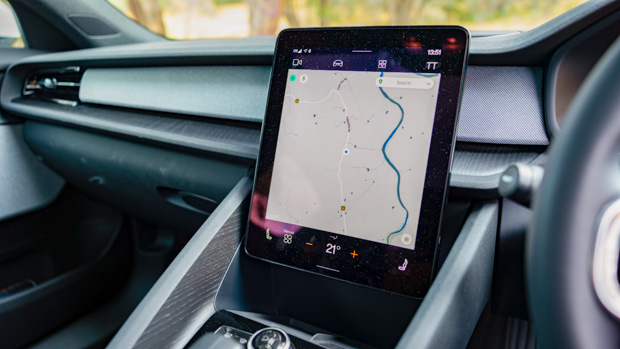
Besides the maligned Weavetech seating trim, which bugged us less as the mercury fell and we sunk into a cool Sydney winter, there is one other area that requires Polestar’s attention: the steering wheel. Instead of using leather, Polestar has used PU vinyl/plastic, and you can kind of tell. Given you have to touch the wheel every time you drive, we hope Polestar can find a material that is more plush-feeling. Alcantara, which degrades fast thanks to skin oils, is not the answer.
However, we were mostly impressed with the car’s software. There is a relatively broad smartphone app and within the car, the tech services are powered by Google Android Automotive. Not Android Auto – but its fully-featured car operating system cousin, with Google Maps for navigation and access to the Play Store. In particular, the Polestar’s Spotify app is so much better than the same thing on phone-driven CarPlay or Android Auto.
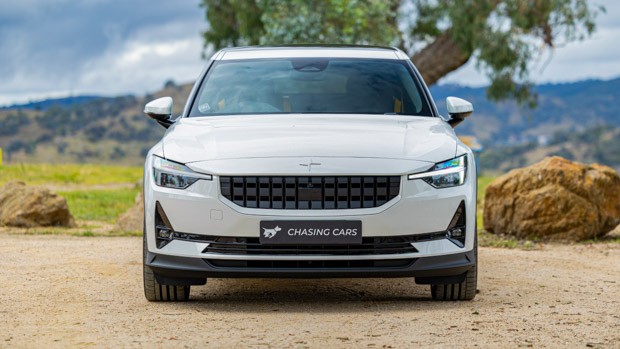
In fact, for the duration of our review, our Polestar 2 didn’t even have Apple CarPlay – and we barely cared. The functionality has since been added (albeit with a cable – old school!) – but aside from the car’s lack of a native Waze navigation app, we were happy to simply run our navigation and media through the car’s more than capable internal systems.
Also, a shout-out to the crisp and clear Harman-Kardon premium stereo. It isn’t as good as Volvo’s higher-grade Bowers & Wilkins stereo found in that brand’s SPA-platform cars, but the H-K is up there: another reason why you do need the plus package, as there’s no other way to get premium audio in the Polestar 2.
As a family car, the Polestar 2 is fairly practical, as long as those in the back aren’t too tall. Headroom is compromised but legroom is generally fine. We loved the pragmatism of the liftback tailgate, making it incredibly easy to load a bicycle or other bulky item – much, much easier than the Tesla Model 3, which is a booted sedan. Not everybody wants an SUV, but the smartly-built Polestar 2 still makes life easy.
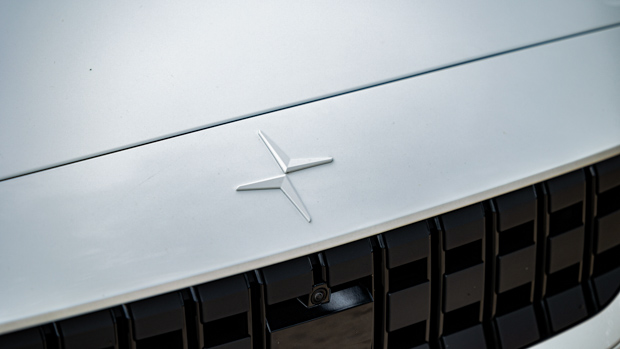
Polestar – and many other electric car manufacturers – are busily chasing down Tesla’s amazing lead on energy efficiency. The Model 3 manages to squeeze considerably more mileage out of every kilowatt-hour of electricity than nearly any rival – especially the Polestar 2. Where the midsize Tesla manages about 14kWh/100km, our long-term average in the Polestar was far worse: 21kWh/100km.
That means we were using 50 percent more electricity to move than if you’d bought the Polestar. Does that matter? Well … that depends. If you charge at home mainly off solar or a cheap overnight electricity price, you may never notice. But if, like editor Tom Baker, you rely on the public charging network because you live in a sixties apartment with no home charging ability, you will notice the extra cost.
Charge using Australia’s expanding ultra-rapid network and every 100km will cost you about $12 in the Polestar 2 versus $8 in the Tesla Model 3. Even so, fuelling the Polestar 2 is much cheaper than a similar petrol car: a BMW 330i would cost about $16 in petrol for every 100km driven.
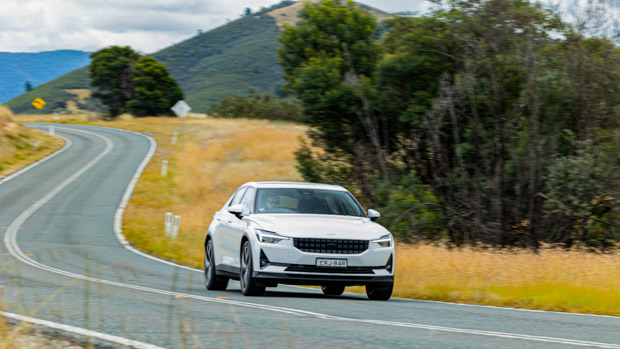
However, the Polestar’s laggard efficiency rears its head when you’re on the highway in more annoying ways: it cuts range. The 75kWh battery can only take you 357km with 21kWh/100km efficiency. The competing dual-motor Tesla has a 70kWh battery but manages to go 500km in similar conditions.
Now, we’re not Tesla cheerleaders – but we think there is much more room to improve in the efficiency game for Volvo and Polestar alike. Doing so would reduce cost of ownership and increase real-world range – or, alternatively, give engineers the ability to actually reduce battery size to reduce weight and further improve ride, handling and agility.
It’s worth noting you can partially fix this problem yourself … by opting for the long-range single-motor version of the Polestar 2. You give up AWD for front-wheel drive and power drops to 170kW, but real-world efficiency is about 15 percent better, at about 18kWh/100km.
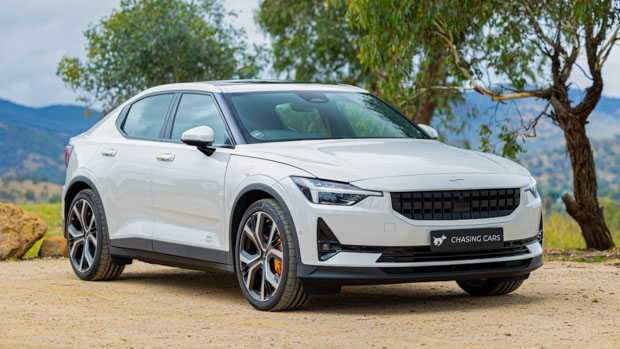
Definitely – but we’d be very careful about how we specified it.
If you need to do long-distance driving a lot, you’ll want the Polestar 2 long-range single-motor, which is advertised as offering 542km range but will give you 400-450km in the real world, rather than the 350km of the spicy dual-motor car we tested.
If you don’t often drive on the highway, meaning outright range is less of an annoyance, the dual-motor car is a performance bargain. There are few cars with an astonishing 300kW/660Nm for $73,400, before on-road costs and options. It is quite a thrill. If you can live with a manual seat backrest and standard audio, just leave the car at that.
If you want a higher-spec experience, with premium audio, fully-electric seats and other convenience features, you’ll need the plus pack ($6000), but for the reasons we’ve explained above, if you go this way we would recommend spending a further $6000 on the cooled nappa leather. As for paint, our choice would be the deep-blue Midnight ($1500) which pairs well with the zinc interior.
The pilot pack may or may not be important to you. It adds reversing AEB – which should be standard – plus a 360-degree parking camera, adaptive cruise control, blind spot monitoring, and rear cross-traffic alert.
Time flies when you’re having fun – and indeed, time is flying by in our Polestar 2. We’ve thrust the electric sedan into service across a huge range of Chasing Cars activities: visiting our parent company in Brisbane (a 2000km round-trip), as a support car for video shoots, a pilot vehicle for new country-road testing loops, a contender in our gruelling 2022 Car of the Year testing programme, and for editor Tom Baker’s daily 30km commute.
In essence, we’re doing it all in the Polestar 2 – even when charging is less than convenient. Difficult strata schemes at our Sydney office and editor Baker’s home makes overnight charging – the panacea of EV ownership – currently impossible, so we rely on the vicissitudes of Sydney’s rapidly growing (and improving) public EV charging network to give our car juice.
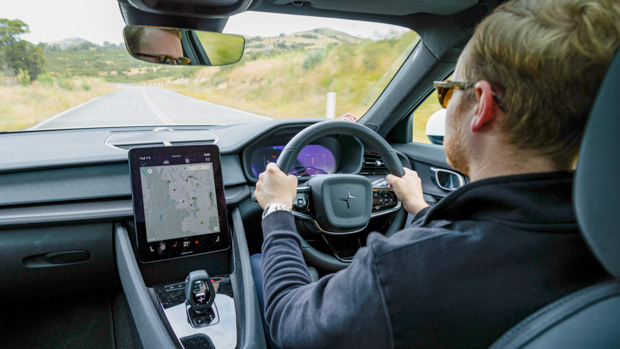
Many people considering buying an EV will have the ability to put in a single-phase home wallbox. We spoke with popular EV charging solution company Jetcharge, in October 2022, who quoted us a fee of around $2300 for a 7kW charger, including the price of installation.
If you do this, you could fully replenish the Polestar 2’s 75kWh battery in just under 11 hours. But most people don’t use their entire battery every day. Replenishing 100km range takes 3 hours on a wallbox (or 10 hours from a standard household outlet) and costs about $2 if you schedule charging to begin after midnight, when electricity’s cheapest. That’s eight times cheaper than petrol.
But we’re not in that position. Instead, we charge our Polestar 2 mainly at motor club-owned charging company Chargefox’s flagship Sydney installation at the East Village shopping mall in Zetland, between Sydney’s CBD and airport. Sadly, for three out of the six months of our loan, these chargers were out of service. Chargefox cited a parts shortage at charger-maker Tritium.
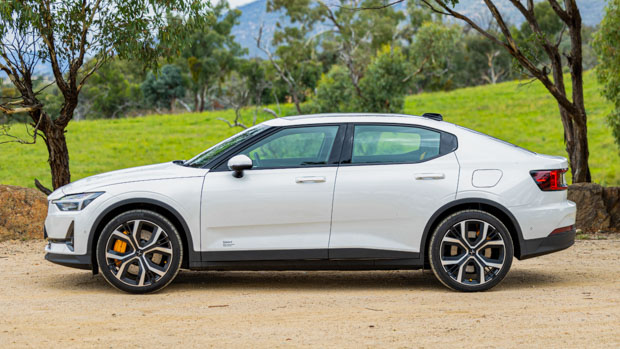
Thankfully, a 165kW ultra-rapid charger owned by Audi Centre Sydney, available to the public on Chargefox and built by Swiss company ABB, remained in service the whole time and worked flawlessly.
Without the benefit of overnight charging, we tended to refuel our Polestar like an ICE car, taking around 45 minutes to go from around 10-90 percent charge each time at a cost of about $36 per fill for the 300km range that granted. The same distance would cost around $48 in a similar car with a petrol engine. The Polestar 2 can charge at up to 150kW speeds, though in practice, our sessions peaked at around 130kW and settled at about 100kW.
Chargefox has since resolved the problems with its Zetland chargers, and competition is heating up in inner-Sydney with fuel-station company Ampol launching its Ampcharge brand of EV chargers – including one nearby at Alexandria. Ampol, like Audi, has opted initially for ABB-made chargers rather than Tritium.
Life was a bit more difficult on the long haul to Brisbane and back: both trips required five relatively brief charging stops. It is a bit counterintuitive coming from an ICE car, but sometimes it can pay to charge more frequently but for less time on road trips in an EV, because the fastest charging speeds are generally available below the 40 percent charge level. This meant pulling in at Chargefox Karuah (Newcastle), Evie Taree, Evie Coffs Harbour, Chargefox Ballina, and Evie Coomera (QLD).
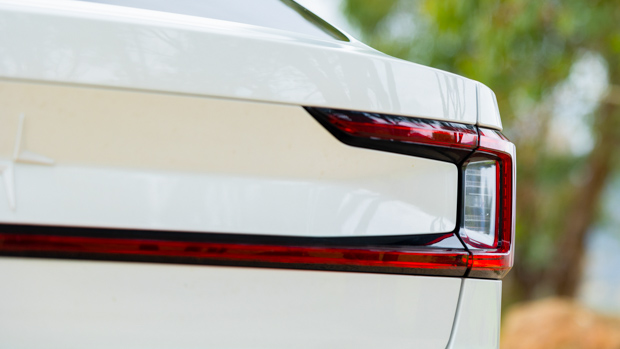
A petrol equivalent would have required just one stop for the same drive, but we probably would have opted to stop 2-3 times for safety anyway. But the sting came when examining the bill. Pushing up the highway consumed nearly 23kWh/100km in the Polestar 2, requiring 230kWh of electricity for the Sydney-Brisbane journey at a recharging cost of $138. A petrol-powered Volvo S60 using 7L/100km for the same journey would have required one stop and cost about $140.
The problem is the Polestar 2’s poor efficiency. Its 75kWh battery is a fine size but it is simply a thirsty car: drinking 23kWh/100km at highway speeds is far worse than a Tesla Model 3 (15kWh/100km for the same drive), or Hyundai Ioniq 5 or Kia EV6 (each around 20kWh/100km). Those cars would have cost $90 and $120 to charge on this trip, respectively.
At least there are things to do while charging – actively and passively. Highway chargers tend to be at well-stocked roadhouses with multiple eating and drinking options. And within the Polestar 2, the built-in browser allows access to Amazon’s Prime TV streaming service, allowing us to continue binging Luxe Listings Australia – but Netflix is, oddly, blocked.
We’ll admit it: we mostly use Apple stuff, so living with a car entirely based around Google services was a challenge – especially with no Apple CarPlay functionality at all (since rectified with an over-the-air update).
The solution here is simple: learn to love your new Google overlords. It’s best to set up a Google account on your computer or phone, log into all the Google things with it – Maps, in particular – and then log in to the car with your credentials. Suddenly, life in the car is much easier and can be quite satisfying.
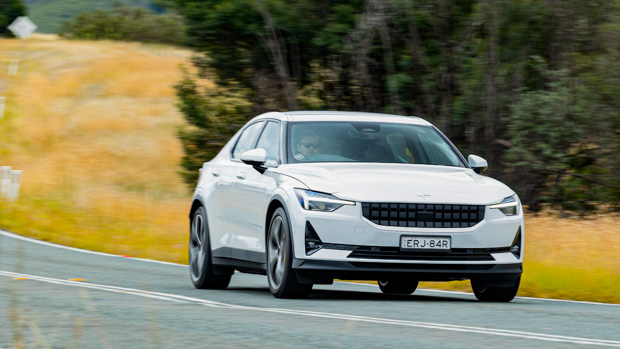
Unlike most cars, there is no in-built proprietary satellite navigation in the Polestar 2. The car has a GPS antenna and an Singtel/Optus data connection (three years free – after that, it’s a subscription of unknown pricing). And it has Google Maps powering your nav on both the central 11.2-inch touchscreen and the driver’s 12.3-inch binnacle. That is it.
It’s worth noting that Google Maps does work off-line as it appears to have a cache of Australian maps, which is reassuring. Our car suffered from a then-typical Polestar 2 problem of slowness in finding the data network after ignition, but this was resolved via an over-the-air update early in our loan.
Once you’re networked, the features are seamless: traffic is displayed clearly in the mapping system and the Polestar’s Google Maps find recent and saved places from your phone. Search is perfect thanks to the breadth of Google’s database. Voice inputs are parsed by Google and work ideally. Entering a destination proffers a remaining battery prediction for arrival. In practice we found this was conservative by around one or two percentage points.

Strangely, unlike similar Audis, there is no satellite mapping function in the Polestar’s Google Maps, which would look cool. For that matter, there is also no Street View. It’s possible to make this very good system great.
A further improvement would come in the driver’s instrument cluster, which only has two display modes: big map, small speedo/range readout, or … no map, big speedo/range readout. There is a contextual menu button that brings up more detailed trip computer info. That is it. Unlike most competitor cars, you can’t view your current media/song, for instance.
Logging into Google Services also unlocks Play (app) Store access, allowing you to download a very fully-featured version of Spotify to jam to over the clear Harman-Kardon stereo. There’s also the solid Pocket Casts podcast-streaming app, TuneIn internet radio, and specialty apps like A Better Route Planner (ABRP), which plots the most time-efficient road-trip routes, factoring in where and when you should charge and for precisely how many minutes.
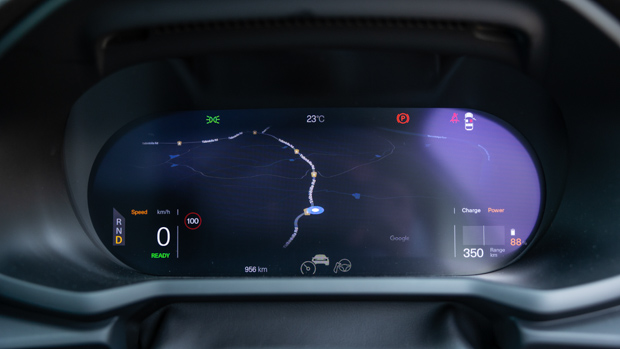
Tech all set up, we spent time tinkering with other features this month – especially the suspension. Like most premium sedans that cost the best part of $100,000, the Polestar 2 has an adaptive suspension with modes … except there’s an old-school twist (literally). You change the suspension yourself. Manually.
Those who have a track car or know their niche Swedish suspensions well will guffaw, but for those buyers used to tapping “comfort” or “sport” buttons next to the gear shifter and experiencing a change in suspension dynamics, the Polestar 2’s approach will appear quaint.
Quaintness gives way to annoyance when you realise how tough it is to change the rear damping settings, though. Unlike the front wheels, which can be turned away from the dampers making twisting the top-mounted force dial a doddle, the rears require either a very skinny wrist wriggling between the huge Continental tyre and wheel arch… or lifting the car on a hoist. We just managed the former, but not without covering our arms in rubber and grease.
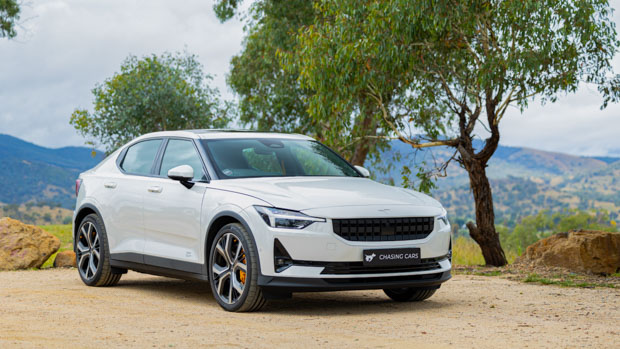
The payoff was a softer ride of sorts. Our Polestar 2 has the performance pack, and the Öhlins dampers were perplexingly delivered on their most punishing, track-only, max-hard setting, leading to a couple of bone-crunching commutes on Sydney’s concrete roads. We’ve kind of fixed that by going to max-soft – but the ride of the Polestar 2 on these dampers is still much stiffer than an Audi A4, BMW 3 Series or Mercedes-Benz C-Class. It’s harder than a C63. Let’s see if we can live with that.
Other driving characteristics can, mercifully, be adjusted through the car’s touchscreen. These include steering weight (normal works just fine for us – it’s quite quick and engaging), and one-pedal driving feel. That’s the subject of a debate in the car industry: Porsche and Mazda want drivers to keep using the brake pedal, while Tesla and others prefer one-pedal driving with the brakes reserved for emergencies.
We’re not sure which side we’re on, yet, but for now we have found the Polestar’s more aggressive one-pedal driving setting easy to get accustomed to, maximising regenerative power. In fact, we’re not sure we have touched the brakes!
What’s Polestar? The easiest way to think of this Swedish-headquartered brand is as an off-shoot of Volvo that’s growing increasingly apart from its once-parent company. At least that’s the official line. Familiar design cues, shared platforms and interior components and extensive technology collaboration will keep Polestar and Volvo’s models closely linked for the foreseeable future.
But that’s true of the Volkswagen Group, the Toyota Motor Corporation and plenty of other automotive conglomerates. The challenge will be in whether all-electric Polestar, under the auspices of the Geely group, can truly carve out a niche of its own despite the magnetic strength of the Volvo brand it now engages in friendly competition with.
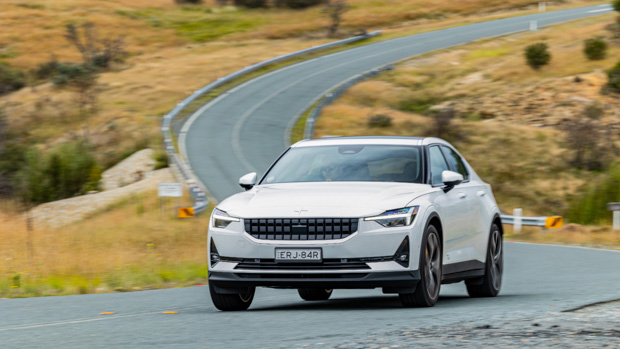
To start understanding the Polestar brand, we’ve signed up for a long-term test of its first model for Australia. The Polestar 2 is a midsize electric sedan with a liftback instead of a boot – much like Audi’s Sportback range, or the Kia Stinger.
As its name implies, the 2 is not Polestar’s first vehicle: that was the 2017 Polestar 1, a stunning large coupe that was an aberration for the brand in that it was not fully-electric, but probably the manufacturer’s first – and last – plug-in hybrid.
If the lush Polestar 1 was a proof-of-concept for the brand now led by former Volvo chief designer Thomas Ingenlath, the Polestar 2 is the car that is meant to take the badge mainstream. Aggressively priced in Australia (from $59,900 before on-road costs at launch, now from $63,900), this electric sedan is obviously directly targeted at this country’s hitherto-favourite EV, the Tesla Model 3 sedan (from $65,500).
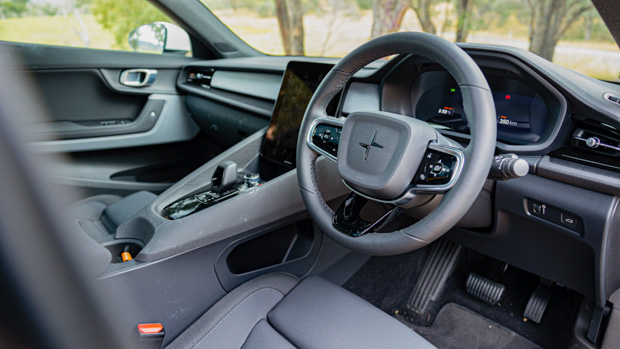
That reasonable entry price buys you a Polestar 2 in standard range, single motor form, with 170kW of power and 470km range (WLTP). The same power output can also be had in long range guise that adds another 70km to your capability on a single charge, thanks to its bigger battery (69kWh plays 78kWh). Finally, there’s the choice to add a second motor to the long range car, granting AWD and bumping power to a stout 300kW.
The Polestar 2 is unusual in that you can have an absolute base model in this very powerful long range dual motor. As standard the car is delivered with partially manual cloth seats, no premium audio, and no adaptive cruise control. But most Australian buyers will dip into the option structure, which is kept very simple in a three-pack line-up.
To understand that’s worth the spend – and what, potentially, is not – we’ve ordered our car with all the fruit. Our car, built in 2021, wears the halo ‘snow’ white paint and is fitted with the three available packages:
The convenience-focussed plus pack ($6000), which adds premium Harman-Kardon audio, wireless device charging, a fixed glass roof, fully-electric front seats, a heat pump, heated steering wheel and neoprene-like Weavetech upholstery.
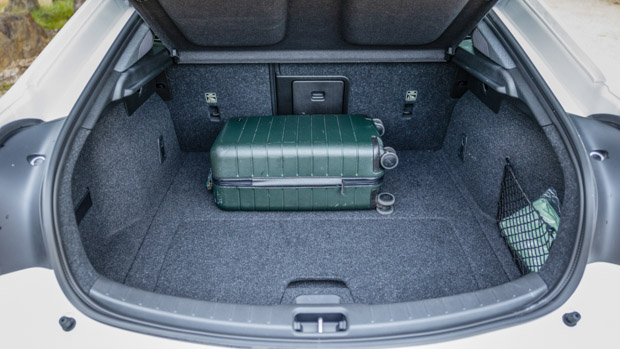
The safety-aligned pilot pack (then $5000). Note the pilot pack has been replaced by the pilot lite package ($3400) during our review term, which forges pixel LED headlights due to semiconductor shortages.
The performance pack ($8000). Only available on the 300kW dual-motor version, this pack adds manually-adjustable Öhlins dampers, 20-inch wheels in Continental SportContact tyres, Brembo brakes, and gold detailing inside and out.
During the course of our loan, Polestar also pushed an over-the-air power bump that took our vehicle’s power output up to 330kW (442 horsepower) – but that didn’t arrive until month four.
Key specs (as tested)
About Chasing cars
Chasing Cars reviews are 100% independent.
Because we are powered by Budget Direct Insurance, we don’t receive advertising or sales revenue from car manufacturers.
We’re truly independent – giving you Australia’s best car reviews.
The estimate provided does not take into account your personal circumstances but is intended to give a general indication of the cost of insurance, in order to obtain a complete quote, please visit www.budgetdirect.com.au. Estimate includes 15%^ online discount.
^Conditions Apply
Budget Direct Insurance arranged by Auto & General Services Pty Ltd ACN 003 617 909(AGS) AFSL 241 411, for and on behalf of the insurer, Auto & General Insurance Company Limited(ABN 42 111 586 353, AFSL 285 571).Because we don’t know your financial needs, we can’t advise you if this insurance will suit you. You should consider your needs and the Product Disclosure Statement before making a decision to buy insurance. Terms and conditions apply.
Indicative quote based on assumptions including postcode , 40 year old male with no offences, licence suspensions or claims in the last 5 years, a NCD Rating 1 and no younger drivers listed. White car, driven up to 10,000kms a year, unfinanced, with no modifications, factory options and/or non-standard accessories, private use only and garaged at night.
^Online Discounts Terms & Conditions
1. Discounts apply to the premium paid for a new Budget Direct Gold Comprehensive Car Insurance, Third Party Property Only or Third Party Property, Fire & Theft Insurance policy initiated online on or after 29 March 2017. Discounts do not apply to optional Roadside Assistance.
2. Discounts do not apply to any renewal offer of insurance.
3. Discounts only apply to the insurance portion of the premium. Discounts are applied before government charges, taxes, levies and fees, including instalment processing fees (as applicable). The full extent of discounts may therefore be impacted.
4. We reserve the right to change the offer without notice.